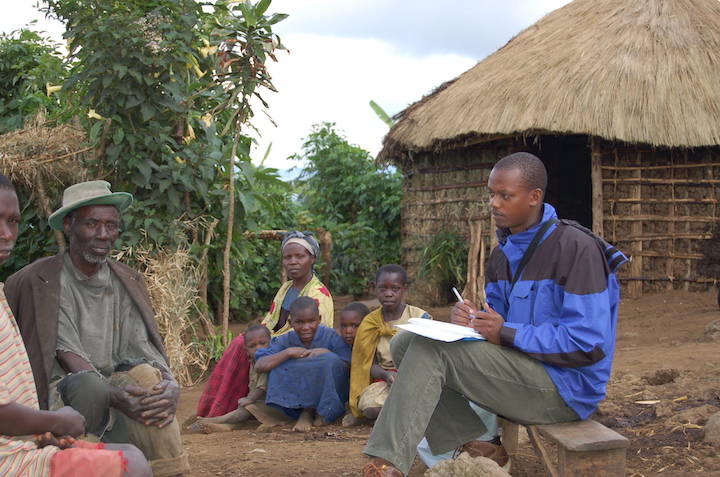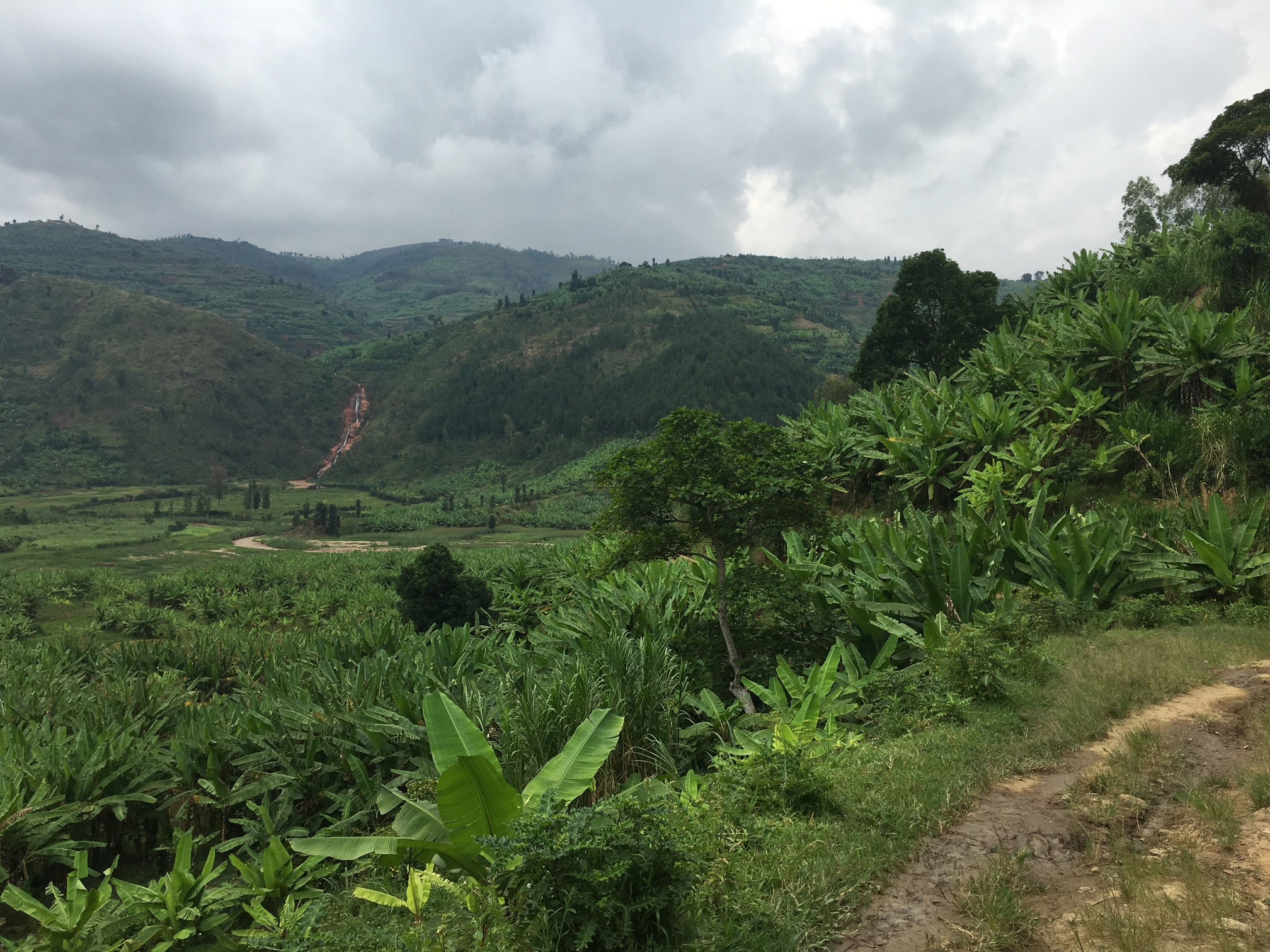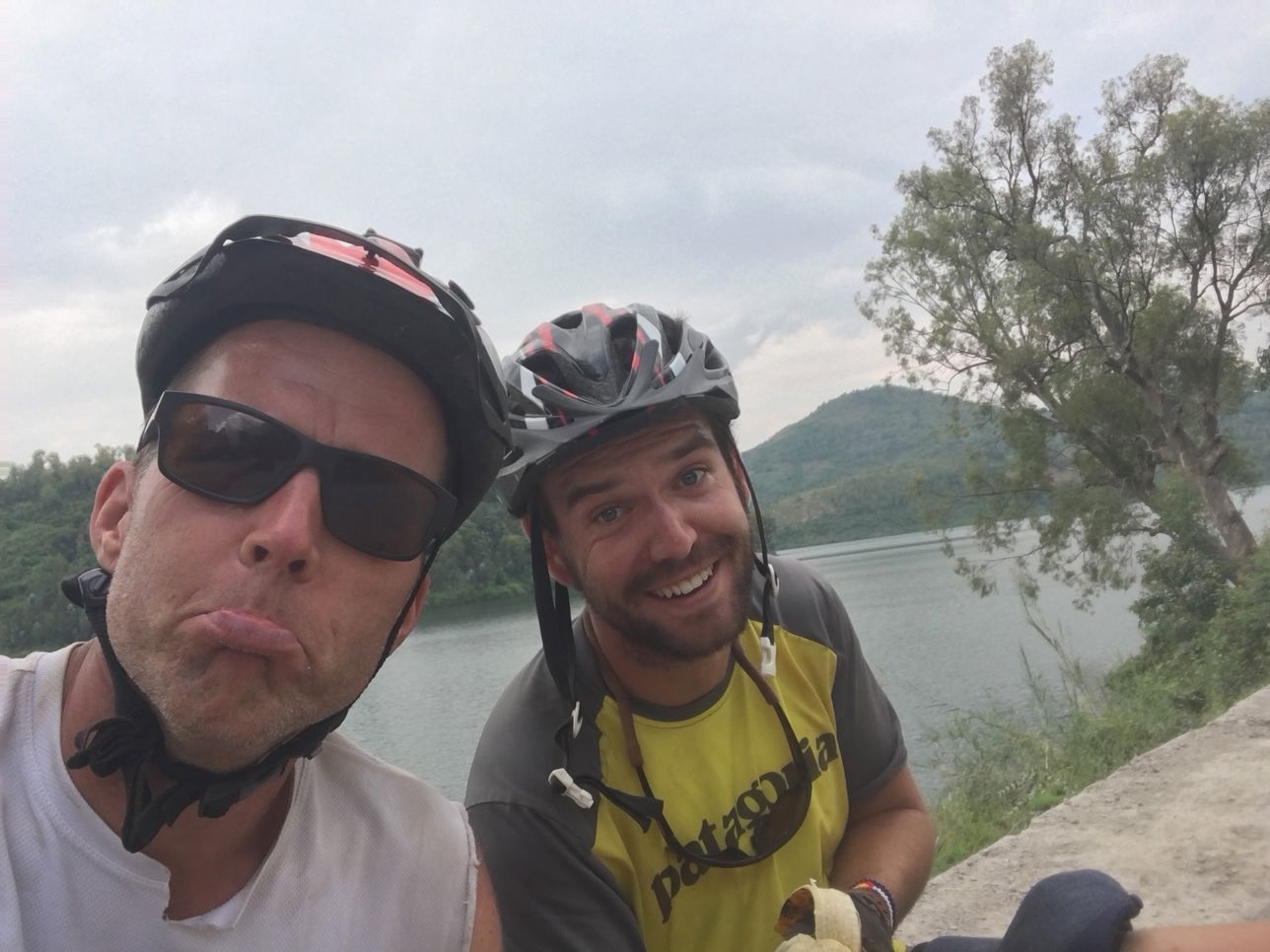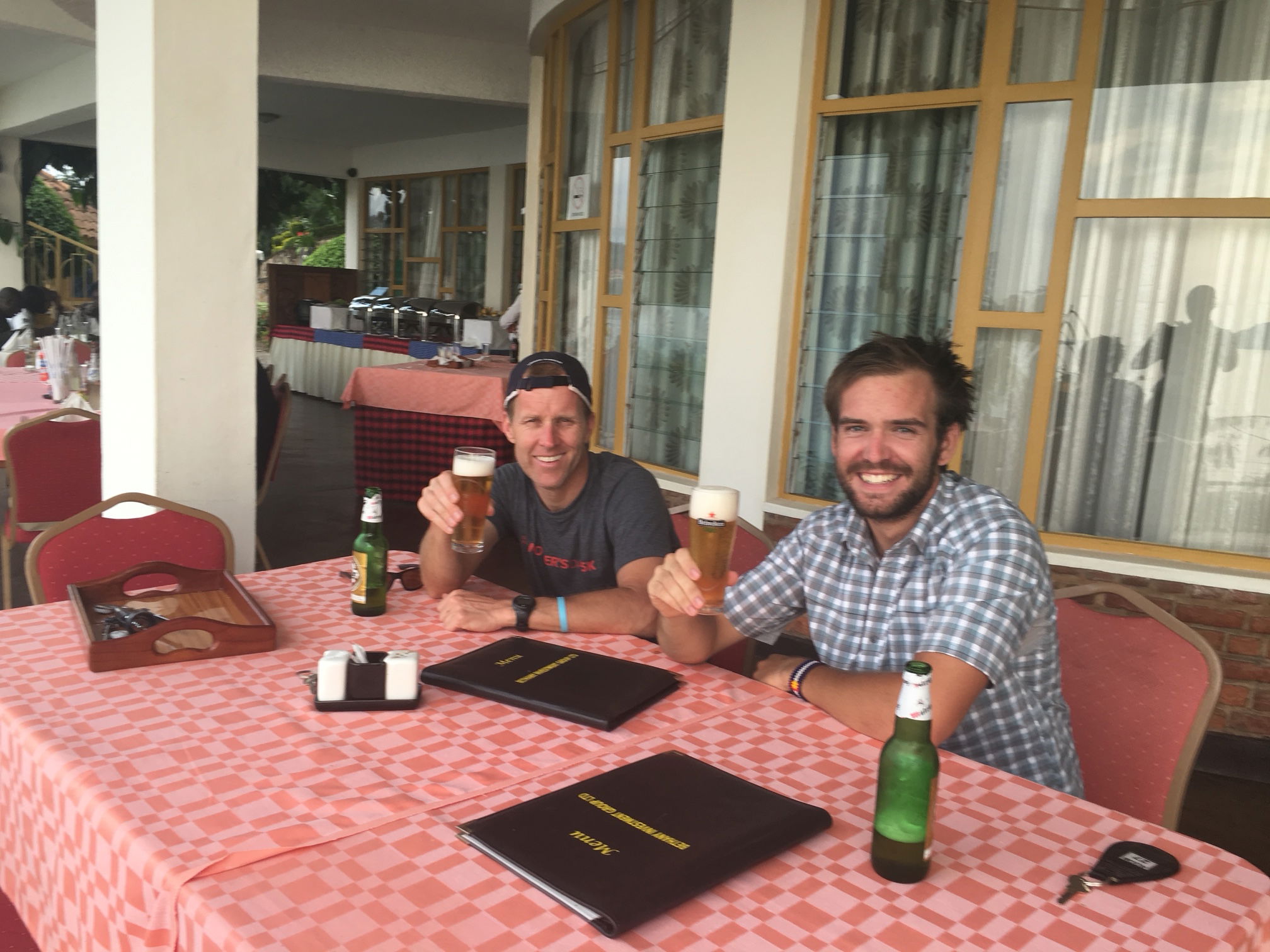Pleasantly Mixed
In 1994 I was a few years into my first post-college “real world” job, a job with a vague title of “associate,” vague enough to establish precisely no boundaries on the job responsibilities. I served in this role at a public affairs consulting firm, a small business of about a half dozen individuals who worked on generating public and legislative attention for clients’ various interests. Only a few years out of college, I certainly had no credibility or expertise to be a consultant, but I could support the actual consultants with various pre-internet tasks that made sense for an eager and skill-less twenty-something to do. I spent hours in public libraries, government offices, lobbies of daily newspaper offices and more, chasing down research, articles and other information, content that would be only a few clicks away today. The skills I learned at this job placed me on a career trajectory, and I remain grateful for the role the people there played in my professional development.
Every day we received multiple local and national newspapers – hard copy newspapers – and it was perfectly acceptable to read the paper as part of a day’s work routine. There was a functional aspect to scanning newspapers, as it helped us track how issues of relevance to our clients were framed and covered. But underpinning this functional aspect was a company value on being informed and asking questions about what we read. Oftentimes there was office-wide discussion about a current event and how media and politicians could shape the narrative about it. At that time, it was pretty tame compared to the narratives that media outlets are more flagrantly and politically willing to do today. It was the first place I was immersed in a culture where people paid attention to and deliberated public events, in very educated ways that sounded above much of the rhetoric of media and politicians.
And that leads me to Rwanda. In 1994, Rwanda’s genocide occurred over several months from April to July. To this day, the number of people – mostly from the Tutsi ethnic group – killed is unknown, though estimated to be in the range of 500,000 to 662,000, and some as high as one million. Hundreds of thousands fled to neighboring countries, and hundreds of thousands remain unaccounted for and either perished in the killing or fled and never returned.
I remember having discussions in our office about the genocide. I’m not sure at the time I even knew Rwanda was a country, but if I did, I certainly could not have placed it on a map. I don’t remember much about the actual content of what was discussed regarding the events in Rwanda, but I clearly remember 1) feeling ill-equipped to contribute, 2) thinking that I wanted to feel as informed as the people around me, and 3) adults with more life experience than me saying things that resonated but hadn’t imprinted on my mind about topics like the foolishness of war and the relationship between a country’s humanitarianism toward others and their economic interests.
My guess is many people who were old enough to be attentive to current events in 1994 still think about genocide when they hear “Rwanda” today. Without any prior knowledge of the country at the time, Rwanda’s events of 1994 became the entire scaffolding of what I knew about the country, and I suspect that was true for others. A decade later, the movie Hotel Rwanda told one particular story from the genocide, and while poignantly presented, it probably narrowed my understanding of Rwanda further as a result: it was the country that had the genocide. At the time, the entire African continent was more of an abstract notion than an actual place in my mind, poorly and disproportionately informed by foreign aid events of pop stars; I look back at the lyrics at “Do They Know its Christmas Time at All?” and can’t believe such a horribly patronizing and careless worldview of humanitarianism ever existed.
Fast forward to sometime in the 2010s. I was managing a small initiative funded by philanthropic dollars to bring conservationists to campus to share their story. Inviting other academics wasn’t typically on my radar; that is an overused, insular and tired approach. And it is rarely inspiring because researchers like to talk about their p-values and goodness of fit indices; important stuff statistically, but not the stuff of inspiration. I wanted people who could inspire others.
I came across a story in the media of a Rwandan working on his PhD at Clemson University and studying the social aspects of gorilla conservation. While working for Rwanda’s national park authority, he pretended to be interested in purchasing a pet gorilla from poachers so he could get on the other side of the issue and try to see the world from their view: why did they undertake such a high risk livelihood, and a livelihood that contributed to near end of an entire species? The story is worth reading and/or watching; Google it.
This individual’s name is Edwin Sabuhoro. When he spoke at CSU in February that year, he humbly described his story and captivated the audience. He is soft spoken, but his story needs no over-the-top delivery. The details are enough to convey his courage, empathy and dedication. I felt star-struck, not because Edwin was a conservation celebrity (he wasn't), but that dumb luck led me to cross paths with someone who had done something so extraordinary, at least by my estimates.

Edwin Sabuhoro (right). Photo credit: etown.org
Living in balmy South Carolina, Edwin understandably had not packed a hat, gloves or really anything in the category of "winter clothes." The night following his talk, it snowed – no, it blizzarded – and Edwin got a few unplanned days in Colorado as a result of canceled flights and impassable roads. He called me and with some detectable concern in his voice – if I recall, he had never experienced snow, let alone a blizzard -- and told me he didn’t have clothes for the conditions. I gathered up some extra gear, made my way to his hotel, and we hung out in the hotel's restaurant with the peace that often accompanies a snowed-in scenario where everything slows down and you suddenly having no schedule. Edwin shared more of his story that afternoon with me, and I was enamored by all of it.
Courtesy of the blizzard that afforded us several hours to talk, the conversation led to a barrage of brainstorming, as I learned more about him and he learned of my work in Kenya, an East African neighbor to Rwanda. That upcoming summer, I made a visit to Edwin’s community and the site of his doctoral research, adjacent to Volcanoes National Park. The following year, I visited again.
I cannot describe how quickly I needed to rebuild my schema of Rwanda after the first visit, and even further on the second. Having been to several Kenya, Tanzania and Uganda – all neighbors to Rwanda – I thought I could anticipate some of what I would experience, something along the lines of a traffic regime barely attentive to rules and signals, an on-again/off-again relationship with punctuality, and where simple tasks are sabotaged by power outages, livestock blocking an intersection, or the person with the key to the drawer holding my Kenya research permit going on vacation with the key in their pocket.
Rwanda’s orderliness and civility was striking. Motorcyclists --- a common means of transportation for individuals as well as taxis – wore helmets and obeyed traffic lights. Sidewalks were everywhere and kept clean. People stood in lines at banks and markets without jockeying for position or the angst that I associated with other parts of East Africa during my travels. One of the adventures of global travel is the constant problem-solving needed for everyday and usually boring things like standing in a line or crossing a street; every place has its norms, rules and unwritten rules, and there is a sense of forced adventure in figuring it all out. In Rwanda, I was struck by how unadventurous – in a good way -- so many of those everyday tasks felt. I recall standing at a street corner making eye contact with the driver of a car who looked puzzled at what I was doing, which is to say I was doing nothing. Just standing and waiting to cross the street, assuming the “walk” signal on the other side of the street was meaningless guidance at best, and a death wish at worst, as I had associated such signals to be in neighboring countries. The driver moved his head swiftly one time left to right, as if to tell me to cross. Unsure if I read the situation correctly, I took some steps into the intersection, gaining confidence with every stride, and shortly thereafter enjoyed the feeling of personal triumph that I had learned how to cross a street in Rwanda.
Throughout the capital city, Kigali, and its suburbs, and throughout Rwanda’s hilly countryside, are memorials and similar reminders about its 1994 genocide. There are plaques on buildings, statues in towns, small memorials sitting isolated on a hill, all memorializing how the atrocities of genocide showed up in that specific location. The number of memorials we saw unexpectedly along our daily travels was sobering; miles into a bike ride in a rural low density coffee growing region, for example, we came across a stone memorial alongside a dirt path describing how many people were killed in this region as neighbors turned against their neighbors. It was a brutal genocide.
What I appreciated about these memorials, as well as a museum in Kigali dedicated to the genocide, was the feeling of ownership and empathy about this horrible part of Rwanda’s history. It didn’t feel like there was a lot of watering down of the narrative. At times I was struck by the emotional details shared at some of the sites and in the genocide museum. I wasn’t sure how to process it all; one part of me felt admiration for Rwanda for telling its history inclusive of all of the rotten but accurate details, perhaps also serving as a nudge to people to live with empathy and humility. But I also was unclear if or how Rwanda had actually recovered enough within one generation of time to be so forthright about its recent history.

Mixed. That’s how I often felt in Rwanda. Mixed. Not in a bad way, but in a way of odd combinations of feelings that co-existed in the same moment. As mentioned above, I went on a bike ride, a multi-day bike ride with a graduate student that we opted for after a few days of sorting out some academic research with Edwin. It was on a designated bike route consisting of dirt road and single track trail – the Congo Nile Trail -- and traversed hillsides of coffee farms and through delightful small towns of people joyful at the novel site of a few riders making way through their town. Sometimes we’d stop for water, a snack or just on an instinct, to take in the happy vibes of a place, and it would inevitably lead to brief and clunky conversations with people as we all tried to speak what little we knew of the other’s language. These interactions were nearly always laden with the utmost friendliness and smiles. We’d get back on our bikes with our hearts feeling full, and then bike past a genocide memorial a few minutes later and learn about dozens of people killed in the place where we stood. Mixed.
On the final day of the ride, we were surprised to discover that the last hours would be on a road that was mostly under construction: some parts smoothly paved, some parts torn up to become paved, other parts with such a high density of potholes that riding a straight path was no option and we weaved our way back and forth, in and around, like some sort of perverse circus game. “Under construction” also meant heavy machinery and big trucks, and while most of Rwanda impressed me with its orderliness, this was the exception. Bikes and heavy machinery were sharing the same space, and it seemed 100% allowable by both actual rules and unspoken rules. It is harrowing to make eye contact with someone driving a massively heavy pavement roller and hope that both of you are interpreting the non-verbal communication similarly. I gripped my handlebars and tightened my shoulders continuously until they were sore, and kept gripping more out of lack of any other option. This went on for literally hours. Later, I could barely make a fist my hands, I had squeezed my handlebars to tightly for so long.

An accurate expression for how I felt during the last hours of the ride.
Eventually we arrived at our final stop – a lakeside hotel – checked in, and rinsed layers of dirt from our clothes and bodies, before spending a few hours at the hotel’s lakeside restaurant with a cold beer, a deep sense of accomplishment for completing the 120km ride, and a deep sense of relief for survival of our road-sharing with heavy machinery. Mixed.

Edwin and I worked together for several years on meaningful projects led by students from a graduate program I directed at the time. Important stuff like issues around reliable water access for women and environmental education for schools. He has since become a faculty member at Penn State University and is off and running with his academic career, while I am winding down on mine.
I still marvel at how Rwanda reached such a high level of functionality and civility within the span of a single generation following its genocide. It intrigues me, and leads me to wonder what sort of leadership and policies are needed for a country to recover from widespread violence that affected everyone at the time in some way. For sure scholars and journalists have investigated this, and it’s one more topic to add to my list of things to learn more about.